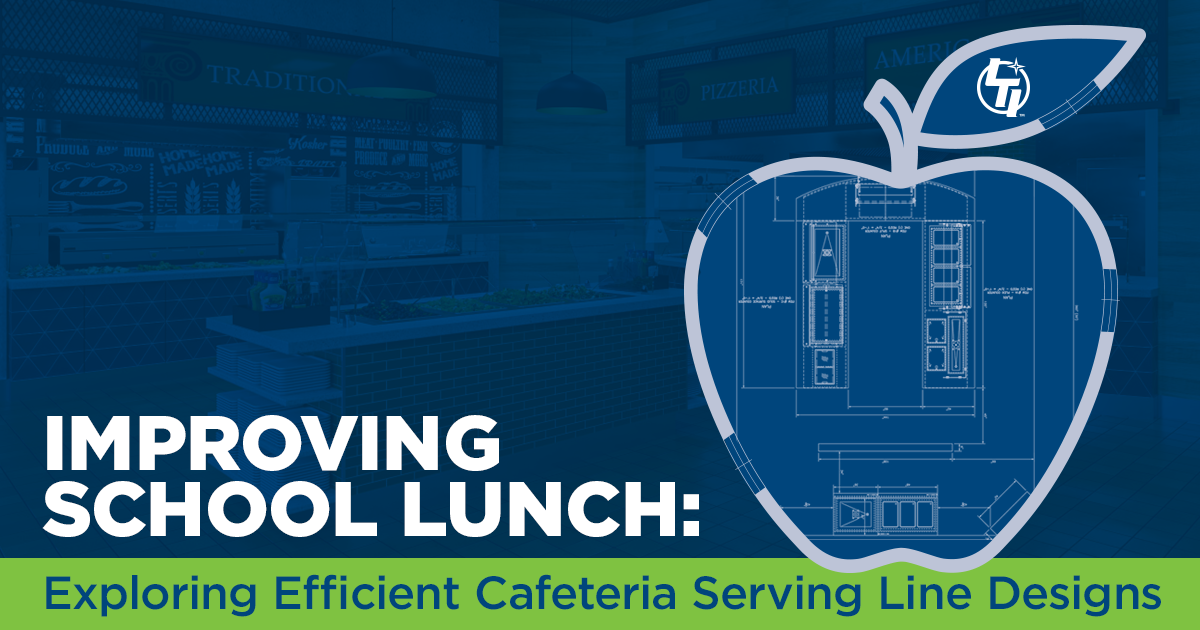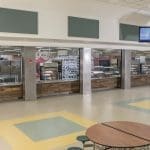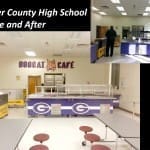Check out this cafeteria transformation at Yulee High School in Nassau County Florida by LTI.
Improving School Lunch: Exploring Efficient Cafeteria Serving Line Designs

When it comes to nurturing a culture of well-being and wholesome eating habits among school students, the design of cafeteria serving lines takes center stage. More than just a practical solution for meal distribution, high-efficiency school cafeteria serving line designs have the power to create an inviting and comfortable environment for students.
With a focus on enhancing the overall dining experience, these designs incorporate elements that encourage healthy eating habits and streamline the serving process. In fact, several studies, have reported positive findings based on choice architecture changes in the school lunchroom, in which the environment is changed to affect food choice decisions.
Let’s explore some common high-efficiency school cafeteria serving line designs that are transforming the way students engage with their school’s dining spaces.
Ergonomic layouts for seamless flow
Efficient serving line designs prioritize the flow of students through the cafeteria, reducing congestion and wait times. One popular approach is the implementation of a linear layout, where food stations are strategically placed in a straight line, allowing students to move swiftly from one station to the next. This layout enables a streamlined flow, minimizing congestion during peak hours. Additionally, the incorporation of well-defined pathways and sufficient space between food stations ensures students can navigate the cafeteria comfortably, contributing to stress-free dining.
Promoting healthy choices through display
Another key aspect of high-efficiency cafeteria serving line designs is the emphasis on promoting healthy food choices. This is often achieved through visually appealing displays that showcase nutritious meal options in an enticing manner.
By arranging fruits, vegetables and other wholesome options at eye level, these designs encourage students to opt for healthier alternatives. Incorporating vibrant signage and engaging graphics that highlight the nutritional benefits of various food items further reinforces the importance of making informed dietary choices. Moreover, incorporating adjustable-height counters enables young students to access food items easily, empowering them to select their meals with independence and confidence.
Customizable serving stations for diverse dietary needs
Catering to the diverse dietary preferences and requirements of students is another aspect of modern cafeteria designs. High-efficiency serving lines often incorporate customizable serving stations that accommodate various dietary needs, including vegetarian, vegan, gluten-free and allergen-free options. By offering a wide array of choices, these designs ensure all students can enjoy a satisfying and nourishing meal, fostering inclusivity and promoting a sense of belonging within the school community.
The integration of dedicated allergy-friendly zones and clear labeling of ingredients also helps students with dietary restrictions make informed decisions, fostering a safe and welcoming dining environment for all.
Incorporating technology for efficiency
In the digital age, integrating technology into school cafeteria serving line designs has become increasingly prevalent. From self-service kiosks for faster checkout to interactive menu displays that provide nutritional information and ingredient details, technology-driven solutions enhance the efficiency and transparency of the dining experience.
By leveraging digital platforms, schools can also implement cashless payment systems, reducing transaction times and minimizing the use of physical currency. Incorporating feedback mechanisms through digital interfaces allows students to voice their preferences and concerns, enabling schools to adapt their menu offerings and dining services according to the evolving needs and preferences of the student body.
Advanced technological solutions
Another way to diversify cafeteria menus and boost student engagement is by integrating foodservice technology such as Low Temp Industries’ (LTI) QuickSwitchTM, which offers a high level of flexibility. Equipped with independently controlled wells that can transition between hot, cold and frozen settings in 60 minutes or less, QuickSwitch allows foodservice staff to incorporate a variety of fresh food options into their menus, enhancing overall cafeteria efficiency.
Efficient cafeteria serving line designs are instrumental
Improving the flow and design of cafeteria lines creates an environment where students can make healthy choices and enjoy their lunchtimes. With a focus on flow, healthy options, diversity and technology, these designs contribute to a positive and enriching school dining experience.
Moreover, integrating solutions from industry leaders like LTI ensures the cafeteria infrastructure is optimized for seamless operations and maximum student engagement. By prioritizing these high-efficiency designs, educational institutions can effectively nurture a culture of wellness and conscientious eating habits among their student body, ultimately supporting the broader goal of promoting a healthier future generation.



